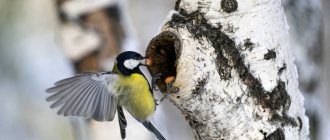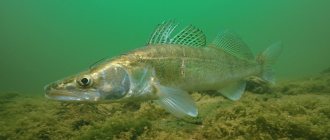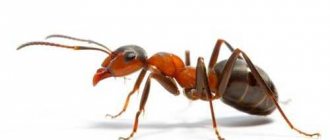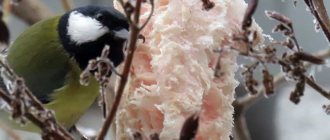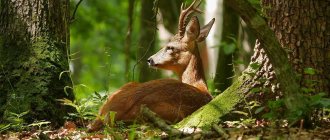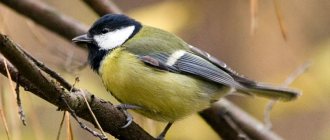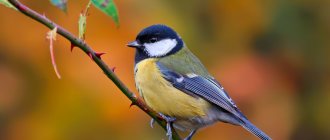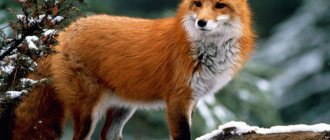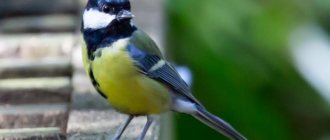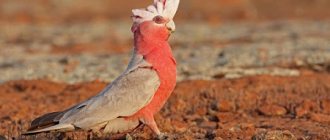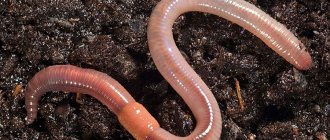Great tit
- Appearance.
The largest among tits (14 cm). The head is black with white cheeks and the back of the head, the dorsal side is greenish (less often bluish), the abdomen is bright yellow with a black longitudinal stripe, wider in males and young birds.
- Habitat.
Distributed in the European part of Russia, the Caucasus, southern Siberia and the Amur region. Lives in forests and parks. More often than other tits, it settles next to humans.
- Nutrition.
Looks for insects and spiders on branches and trunks. In winter it feeds on seeds and other plant foods. A common visitor to feeders in city parks. In some places, by December, tits are already accustomed to taking food from an outstretched palm.
- Nesting.
It prefers to nest in areas of not particularly dense deciduous forest, groves, parks, old orchards, and uranium thickets along river banks. Found in populated areas with woody vegetation. Avoids areas of pure coniferous forest during the nesting period.
The nest is made in hollows, niches of buildings, old nests of squirrels, birds of prey and other closed places.
The materials for the base of the nest are thin twigs, dry grass stems, moss, roots, and lichens. To these the tit adds fluff, cotton wool, wool, feathers, cocoons and webs of spiders and insects, etc. This mass fills the entire nest. In a pile of this building material, a tray is squeezed out, which is lined with horsehair and wool, sometimes with an admixture of plant fluff and feathers.
The dimensions of the nest vary greatly, but the dimensions of the tray are more or less definite: diameter 40-60 mm, depth 40-50 mm. There are 9-13 (sometimes up to 15) eggs in a clutch. The eggs are white, with a slightly shiny shell, with a large number of reddish-brown spots and dots, sometimes forming a noticeable rim at the blunt end. Egg dimensions: (17-19) x (12-14) mm.
The great tit has two clutches a year: the first in late April - early May, the second in June. Incubation lasts 13 days. The chicks stay in the nest for 16-17 days.
- Behavior according to the seasons of the year.
In March, pairs are already formed, but nesting begins (in central Russia) only in the second half of May. In more southern places, such as Ukraine, egg laying begins as early as April.
In different parts of the country, the nesting sites of the great tit differ significantly. Incubation lasts about fourteen days, during which time the male diligently feeds the female.
Already on the second or third day, hatched chicks make themselves known with a thin, high-pitched squeak. The chicks sit in the nest for a long time (about 17 days) and leave it only when their flight feathers have completely grown. Departure usually occurs early in the morning.
Nutrition
These birds eat whatever food they come across on their way. Of course, they prefer food of animal origin; thanks to them, many pests are destroyed that have a detrimental effect on plants in the wild and on agricultural crops. They eat caterpillars, beetles, mosquitoes, flies, bedbugs, cockroaches, grasshoppers, ticks, and centipedes.
In the autumn they switch to seeds: flax, wheat, oats, sunflower seeds; and the fruits of rowan, blueberry and other berries. In winter, tits may not have enough seeds and berries, then they happily eat from feeders that people install, if we are talking about a populated area. Winter is a difficult time for them , especially when there is not enough food. Due to its mobility and the lack of food reserves for the winter, the great tit looks for supplies of other animals. To survive, it can eat carrion (according to ornithologists). These birds happily eat unsalted lard and are very fond of sunflower seeds.
They eat them in a special way, even if they have already crushed the seed husk and pulled out the seed itself, they still hold it with their paws and peck one piece at a time.
Biology - Great Tit - Reproduction
09 February 2011
Contents: 1. Great tit 2. Description 3. Distribution 4. Reproduction 5. Nutrition
6. Classification
Monogamous or occasionally polygamous, many pairs remain for several years in a row. Across much of its range, the breeding season runs from late January to September, with egg laying often correlated with food availability. Thus, British scientists discovered that as a result of global warming, birds in recent years have begun to lay eggs slightly earlier than usual, which is caused by the earlier appearance of caterpillars - the main food during the breeding season. In Java, breeding can occur throughout the year with peak egg laying in April-June, in Israel in October-December. At the end of January, flocks of tits break up, and the birds occupy nesting territories, becoming aggressive towards newcomers. In Israel, flocks do not form, and the birds guard their territory throughout the year. During courtship, the male stays slightly higher than the female, jumps from branch to branch with slightly spread wings and tail, flies up and gently glides to the site of the future nest, and ritually feeds the partner.
In Ukraine and southern Russia, the first songs of the male can be heard in mid-February, in the north one or two weeks later. For the nest, a tree hollow is most often chosen at a height of 1.5-5 m from the ground, but if there is a lack of suitable places, another closed place can be used - a mouse hole, a void in the outer wall of a building, a crevice in a rock or wall, an artificial hollow, titmouse The plasticity of this tit in choosing a breeding site can be illustrated by the following example: in the 1980s, experts recorded the fact of constructing a nest in the barrel of a cannon standing in the courtyard of the Artillery Museum in the center of St. Petersburg. Rarely occupies unused squirrel holes, woodpecker hollows and old nests of magpies and other birds of prey. There are also known cases of devastation of clutches of other birds, in particular pied flycatchers. The construction and arrangement of the nest is carried out exclusively by the female. The main material used is moss, thin twigs, last year's grass stems, lichens, as well as animal hair, feathers, spider cocoons and cobwebs - this mass fills the interior space of the shelter.
How do they reproduce?
For nesting, tits love closed and comfortable woodpecker holes. There are real bird fights for them. If homes are not found, birds use former squirrel shelters, magpie nests, natural depressions in wood, or - as a last resort - settle under the roofs of buildings.
Typically, tits lay about 10 white eggs in an insulated house, with small dark orange or bright red spots. The first clutch occurs at the end of April, the second - around the end of August.
In the first two days after the chicks appear, the female does not leave the nest: the male takes care of food, insulation and protection. Next, both parents search for food: together they deliver food to the offspring up to 300 times a day. A little more than two weeks later, the babies are ready to “take their wings”: they are fully feathered, fattened and ready to learn to live independently. Preparation lasts up to 9 days, during which the parents feed the cubs a little more.
If you liked the article, please like it and share it with your friends. In the comments, you can describe the facts you know about tits.
Tit bird. Tit's lifestyle and habitat
In populated areas, sometimes soft garbage is also used - cotton wool, scraps of thread, etc. The diameter of the tray is 40-60 mm, the depth is 40-50 mm.
There are usually two clutches per season, the first of which in most of the range occurs in late April - early May, and the second in June. A full clutch consists of 5-12 eggs, and the second time the bird usually lays fewer eggs than the first. In some Western European countries, experts have discovered an interesting phenomenon: in areas with severe air pollution, a female can incubate an empty nest, without a single egg. The eggs are white, with a slightly shiny shell, with numerous reddish-brown spots and specks. Egg dimensions x mm. The female sits tightly for 12-14, sometimes up to days, while the male forages and feeds her. When approaching a human nest, the hen hisses loudly, and if there is immediate danger, it takes off and circles over the nest together with the male. Hatched chicks are covered with gray down on their heads and backs, and the beak cavity is orange. The offspring are fed by both parents, bringing them to the nest on average 6-7 g of food per chick per day. The chicks stay in the nest for 16-22 days, after which they acquire the ability to fly, but for about another week they are completely dependent on their parents. Even after this time, young birds often stay close to the nest and are fed from time to time by their parents. The second brood stays with its parents for up to 50 days, when with the arrival of autumn the birds flock together. The maximum known life expectancy is 15 years.
Laying eggs
Nest with brood
Grown up chick
Appearance
The tit has a color that changes from tone to tone: its belly is yellow, along which there is a black stripe. Large white spots are clearly visible on the cheeks, the eyes are shiny, very dark, the plumage around them plays with several tones at once: from gray to pale blue.
Tits belong to the order Passeriformes. In length - up to 20 cm, weighing up to 20 grams and with a wingspan of about 25 cm. Tenacious legs allow birds to stay on branches of different thicknesses.
The tit is easy to recognize by its singing: it combines more than four dozen variations of the interweaving of sounds. She often changes the tempo, rhythm, timbre, and pitch of her voice. Males sing more often and louder than females.
Tit bird. Tit's lifestyle and habitat
tits
Tits are small birds, the size of a sparrow like a great tit or smaller like other tits in Russia. They are forest dwellers who spend most of their lives on tree branches. Here they hunt for insects and their larvae. To do this, tits methodically examine branch by branch, looking for prey on leaves, needles or in irregularities in the bark.
The paws of tits are adapted to constantly being on the branches - strong, “with unusually sharp, steeply curved claws.”
Where do chaffinches build nests?
Nest location
Chaffinch on deciduous trees
places
the nest
at the base of a side branch extending from the main trunk; on spruce or pine trees - usually on a horizontal branch among the needles at a distance from the trunk, less often near the main trunk.
Interesting materials:
How to apply tea tree oil to your face? How to apply zinc ointment to acne? How to rearrange tracks in Spotify? How to store mint for the winter? How are floors cleaned after removal? How does milk affect the liver? How to freeze raspberries? How can you use wood ash? How can I use Heparin ointment? How can you use jojoba oil for hair?
GREAT TIT
Another common feature of the representatives of the family is a short, but strong and durable beak. Birds can use it to crush a seed or pick out a piece of bark. Some species may lightly gouge a branch or tree trunk in search of insects.
Like other birds that feed on tree pests, tits do not fly away for the winter. After feeding the chicks and waiting for them to “come of age,” the birds gather in flocks and roam through tree stands. Their “social” period of life begins at the end of summer, continues through autumn and winter until next spring, when mating games begin. One flock often hunts for several species of tits and birds of other species - nuthatches, pikas, and sometimes woodpeckers.
The flight of tits is uneven and pulsating. Quickly flapping its wings several times, the bird folds them for a second or two and flies by inertia. Then a series of strokes follows again, again moments of rest, and so on throughout the entire air path. Tits avoid long flights by moving from one tree to another. They move poorly on the ground, in short leaps, so they prefer not to land on it.
Tits usually nest in hollows. Their testicles are small, measuring a little more than 1.5 x 1 cm, that is, the size of a fingernail. In the great tit they are a few millimeters larger, but still very small. Tits are very useful birds for gardening and forestry. They destroy a lot of pests. “During the feeding period, a pair of tits brings to the chicks at least 10 thousand insects, including codling moth, pine moth, nun moth, gypsy moth, oak budworm, etc. Moreover, these birds destroy butterflies at all stages of their development.” In winter, tits' diet also includes seeds.
Some features of tits are indicated. So they can extract such prey from places that are inaccessible to most insectivorous birds. Tits can pull insects out of dense cocoons, wintering nests, and hollow them out from under the bark. “Many caterpillars are similar in color and shape to inedible objects (for example, moth caterpillars that resemble dry twigs) and are missed by birds. Tits constantly test the edibility of small objects, grabbing them with their beaks and feeling them with their tongues.”
In addition, tits scare away some flying insects while combing tree branches. They hide in the crowns, and those driven by tits fly out and fall into the beaks of other insectivorous birds.
In Latin, the genus of Tit is called Parus. Why Parus and what it means in ancient Roman language - I don’t know.
Keeping at home
Some people like the appearance and behavior of tits so much that they decide to tame them and keep them at home in a cage.
What to feed
The most important requirement that must be met when keeping birds at home is a proper, balanced diet. It is best to give a daily mixture consisting of equal parts:
- minced meat;
- grated carrots;
- white crackers;
- cottage cheese.
This combination of proteins, fats, carbohydrates and vitamins allows the bird to live the entire allotted period - which is 10 years or even more.
Mealworms
Also, experts who know about the habits of tits recommend giving them mealworms. You can buy them at a pet store or even breed them at home. Three to five of these worms a day will make the bird’s life happier.
Breeding and care
It is relatively difficult to obtain offspring from tits - you will need a fairly large aviary dedicated to two birds. During this period, feeding should be especially plentiful; it is advisable to increase the amount of live food in the diet. Then the tits will be sure that spring has come, and there will be no problems with feeding the chicks.
On a note! In summer, a tit eats about the same amount of insects per day as it weighs.
Moreover, you need to carefully monitor their behavior - tits have a very difficult character, and a male and a female can start a fight. In this case, they need to be seated for several days, and then try again. If the male sings trills and the female listens to them favorably, then everything is going as it should.
Birds do not need special care at this time. It is enough to give them fresh food and clean water, and at the same time put a small house or a closed box with a narrow opening, and spread threads and wool around the cage so that the female has something to build a nest from. In just a few weeks, the birds will delight the breeder with a new addition to the family.
What are pigeons afraid of?
inconvenient for birds to live and spend time in. Pigeons, like any birds, are shy. They do not like sharp sounds and smells, bright light and proximity to other animals, especially predators. ... All this glares well in the sun, and bright spots of light scare away birds.
Interesting materials:
What mode should you use to dry greens in the oven? On which website can I find out the history of a car? In what account are inventories recorded? At what level is the ancient debris? At what level is Magikarp evolution? At what level is the chevron sewn? Is it necessary to clean chicken liver films? Do hunting sausages need to be cleaned? Do I need to peel turnips? Do I need to peel the skin of zucchini?
